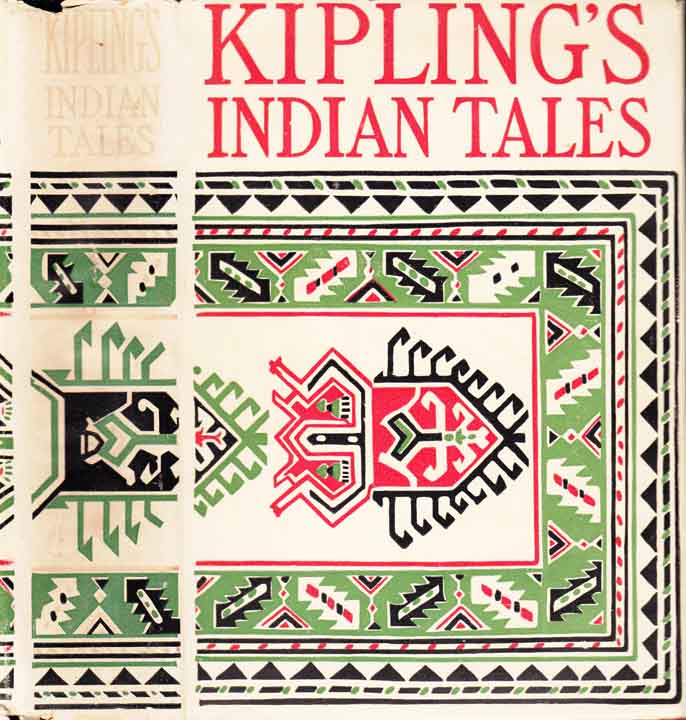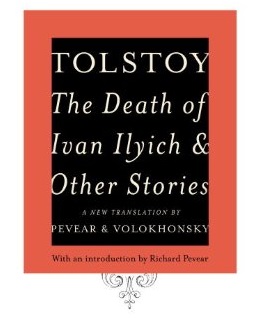April reads (Book Reviews)
Book #1: Indian Tales by Rudyard Kipling

Being the Bard of Empire has proven a long-run liability for Kipling’s enduring appeal among modern audiences. As someone who has a fairly high tolerance and moderate nostalgia for Pax Britannica, even I find some of Kipling’s verse cringe worthy. One of his most famous poems, Gunda Din, which is found in many English poetry collections ends with “… Though I’ve belted you and flayed you … You’re a better man than I am, Gunga Din!”. Charming. Or take Boris Johnson’s favourite overseas poem to bring up during diplomatic missions: “Ship me somewheres east of Suez, where the best is like the worst. / Where there aren’t no Ten Commandments an’ a man can raise a thirst”. Despite not having aged well, Kipling is still a remarkable wordsmith and, like many of the problematic classics, should be read in order to understand the psyche of the time.
My collection of Indian Tales by Rudyard Kipling is from 1899 by H. M. Caldwell Company and purchased for me by my partner at a book fair. It contains 35 short stories and 16 illustrations, mainly containing the works Kipling wrote when he was a journalist and living in Allahabad from 1883-89. The most well-known stories are found in Kipling’s earlier publications including Wee Willie Winkie and The Phantom Rickshaw. The stories I found most engaging were the ghost ghost stories, especially The Strange Ride of Morrowbie Jukes, which reminded me of Browning’s Childe Roland. I also found the descriptions of battles in stories like The Drums of the Fore and Aft to be rousing. Most of these stories were written less than a decade after the second Anglo-Afghan War, and it is unsurprising that the military themes are around British regiments fighting against the ferocious Ghazi’s armed with jezails. The loose formation and savage fighting of the natives is contrasted against the right formation and discipline of the red coats. Despite showing up in around a third of the stories, I was not particularly moved by the Three Musketeers of the Indian Tales: privates Learoyd, Mulvaney, and Ortheris. Kipling’s use of cockney dialect and slang feels well done, but like some of the comic relief in a Shakespeare play, their humour and slapstick did not land for me.
I am happy that Indian Tales is part of my library now, but for many readers it will be an acquired taste. At a minimum it is an excellent view into the imperial mind of an Englishmen living at the height of the British Raj. Kipling is unabashed in using a variety of Indian slang throughout the novel, and the characters and settings feel thoroughly “Indian”, from an Anglo-Indian perspective of course. The most famous story of this collection The Man Who Would Be King emphasizes the view that the English thought of themselves as gods in relation to the locals in the spirit of the White Rajahs. The supremacist view embedded in Victorian empire has made it difficult for future generations of either Indians or Europeans to have an open or honest assessment of the economic, political, or literary legacy that British rule left the in the subcontinent.
Book #2: The Death of Ivan Ilyich & Other Stories by Leo Tolstoy

In the book Being Mortal Atul Gawande references Tolstoy’s short story The Death of Ivan Ilyich as an excellent reference for understanding why medicine fails today. Ivan is a successful lawyer and judge whose main ambition in life is to ascend the social hierarchy. Even though his marriage and family life are unsatisfying, he feels his professional accomplishments are more than sufficient compensation. After suffering from a minor accident, a mysterious pain continues to grow in Ivan until his burdensome illness strips him off his career and vaulted social standing. Despite being visited by a plethora of medical men who attribute Ivan’s illness to a variety of causes and prescribe numerous treatments, at no point does Ivan receive the thing he most desperately wants: the be healed. Once Ivan understands that he will die he wants to be comforted as a child would be. By failing to acknowledge his vulnerability, Ivan is left existentially bare. Only one character in the story, Gerasim, an uneducated peasant, is able to provide the physical healing that Ivan so desperately craves. By the simple act of holding his legs to reduce his pain, Ivan Ilyich takes succor is the strength and vitality of a younger man’s bodies. The relationship is not homoerotic; instead it is the closest physical manifestation Ivan comes to receiving the cooing embraces he so desperately desires.
The Death of Ivan Ilyich is the best story to be found in Richard Pevear and Liarissa Volokhonsky’s translation of Tolstoy’s most famous shorter works. This translator-couple pair has tackled many other Golden Age works including most of Dostoevsky, Tolstoy’s epics, as well as Gogol, Bulgakov, and Chekhov. The translation feels fresh and well suited to the 21st century. Two of Tolstoy’s stories set in the Caucasus: The Prisoner of the Caucasus and Hajdi Murat have also aged quite well and feel particularly relevant to understanding both Islam in the region as well as Russia’s brutal Chechen wars. Despite being a devout Christian, Tolstoy is able to write from a Muslim perspective with great empathy.
Other stories in the novel were more hit and miss. Some stories, like The Forged Coupon, had very engaging beginnings but ran out of steam half way. Others, like Father Sergius, were more consistent throughout but less interesting over all. Tolstoy’s religiosity shows up in several manifestations. A clear theme of sexual guilt runs throughout several stories including The Kreutzer Sonata to The Devil – where in the latter the protagonist commits suicide to prevent him from engaging in adultery. Like a good Christian, Tolstoy treats even the most sinful characters with generosity (Father, forgive them; for they know not what they do). The characters most obsessed with the material are punished in this world when a significant loss lays bare the shallowness of the life and ambition (e.g. Vassily Andreich in Master and Man). Tolstoy’s fiction is also interesting in that many of the characters were real historical figures such as Prince Vorontsov and of course Hajdi Murat. For readers interested in a modern translation of Tolstoy’s works without having to tackle a thousand page sprawling epic, Pevear and Volohkonsky’s Stories may be a good place to start.
Book #3: Getting Things Done by David Allen

A century ago most jobs could be decomposed into discrete tasks: milking cows, soldering iron, or stitching shirts. While these tasks may have been drudgery, they were at least defined. Today work has become ‘edgeless’, in that it is difficult to determine where one’s responsibilities end and begin. This ‘edgelessness’ will often lead to the creation of more work as it is difficult to assess when a task is actually complete. When combined with access to effectively unlimited information from internet sources, it is easy to feel as though a task could have been done better. One approach to add ‘edges’ back into modern work is to use checklists and to-do lists. However, such checklists are fragile to rapidly evolving situations and workflows. In the book Getting Things Done David Allen outlines strategies for reclaiming a definite outline to work and methods to improve the mental health for workers in the modern economy.
Allen believes that without an external source to track our goals and tasks, we inevitably store this information in a haphazard manner in our brains. This is problematic for several reasons. Instead of focusing on our work, we end up focusing on what we ought to be working on. Because we have no control over the next thought that will arise in our head, our brain will continue to interrupt our processes to remind us that we have a project due at the end of the week, or an upcoming birthday party, etc. Our internal checklist has no way to rank tasks.
The first step to streamlining ones cognitive overhead is to externalize the list of all the things we want to do in our lives. This system must contain everything one wants to do in life. Without this level of trust, our brains will inevitable resume some of their former responsibility. The goal of the external system is to: rearrange incomplete lists of unclear things. It is important to not merely categorize ‘stuff’. If one of your goals is to learn the guitar, writing this down is not sufficient. What are the next steps needed for this goal: do I need to buy a guitar? Do I need to replace the frets? Do I need to book a lesson?
You don’t manage priorities you have them. The key to managing all your ‘stuff’ is managing your actions.
After developing a trusted system to track and suggest next-actions for every one of our goals, Allen recommends using an alternating horizontal and vertical scanning approach. Searching across the range of things to do is horizontal scanning. It is deciding: ‘what will be next priority’? Vertical scanning is looking at all the list of actions that need to be completed, ranking them, and then acting on them. The book summarizes this system with a three-point strategy:
- All unfinished projects must be logged in an external system (collection bucket) and not in your mind. You must trust that you will come back to this repository so you don’t need to think about it.
- Clarify what satisfies the commitment or what constitutes progress in fulfilling it.
- Have a reminder system for following up on the external system.
After finishing the book I took several of its lessons to heart. I reorganizing my Google Tasks into short, medium, and long-term goals. Short-terms goals are anything which require a single action (booking appointments, finishing a chapter, etc). Medium-term goals are things that require several steps but could be finished within a few weeks. Long-term goals are aspirational. They may not come to fruition, but they can be composed into medium-term goals. Readers of Getting Things Done may find themselves skipping some sections which get into the weeds of specific organizational structures. Furthermore my edition from 2001 felt slightly dated with numerous references to personal digital assistants! Allen is a very good writer with a great sense of humour. He seemliness weaves personal and professional stories into the book’s narrative. I particularly enjoyed the numerous quotes found throughout in the margins on the book. This is an excellent book to read for those looking to have a better sense of control over the lives and the mental health benefits that come from this.
Time is that quality of nature that keeps events from happening all at once. Lateley it doesn’t seem to be working.
The hurrier I go, the behinder I get.
The winds and waves are always on the side of the ablest navigators. (Edward Gibbon)
Rule your mind or it will rule you. (Horace)
Vision is not enough; it must be combined with venture. It is not enough to stare up the steps; we must step up the stairs.
There is usually an inverse proportion between how much something is on your mind and how much it’s getting done.
Bright people have the capability of freaking out faster and more dramatically than anyone else.
One of the greatest challenges you may encounter is that once you have gotten used to “What’s the next action?” for yourself and those around you, interacting with people who aren’t asking it can be highly frustrating. It clarifies things so quickly that dealing with people and environments that don’t use it can seem nightmarish.
